|
|
Music handsets comparison – which one to choose?
It’s widely known, that comparisons based off real handsets’ specifications
often attract attention of wide audience – though once we get to
comparing music phones, one can justly say that all conclusions
depend on subjective impressions, as tastes differ. Frequencies
measurement does not give plain data, which can help in practice
either – how can you judge whether device A is superior to device
B when both of them have default earphones plugged in and output
sound is almost of the same quality? It seems under these conditions
such issues are pointless and not worth posting.
However there is something that saves the day – so called focus-groups,
which arrive at a conclusion by testing music playback quality and
overall feeling of every given device subjectively. These experiments
allow obtaining information that are likely to prove useful in practice,
and predicting attitude towards the product once it is released.
Not a single magazine provided test of this kind, thus Mobile-Review.com
has managed to hit the status of pioneer once again. I should stress
that in most cases focus-groups are organized by manufacturers themselves,
nevertheless they don’t completely fulfill their main objective
– rating a device fairly, and pretty often those results turn out
to be biased. Before putting our hands on the very experimental
results, let’s see which models have undergone our tests.
Comparison participants or the modern market of music handsets
The very concept of music handsets has been developed since Sony
Ericsson in cooperation with Sony reanimated the Walkman brand.
And the truth of the matter is that this was the first great success
of a music phone on the entire market. Simultaneous updates of the
rest of the lime-up and presence of other high profile music solutions
didn’t affect the sale rates much. It was Sony Ericsson to start
the trend of positioning music part as essential in the first place.
However this manufacturer couldn’t create enough of handicap to
ensure its leadership for a long period – Motorola was also grinding
in this field, and this resulted in ROKR line-up launch, which’s
first representative E1 was a re-designed Motorola E398 with iTunes
support. The model proved to be such a big failure in 2005, that
we won’t even include it in the range of compared phones, it’s an
outmoded device in many ways. A bit later on, Nokia also joined
the race for taking over the music phones market – and this attempt
was rather successful, as Nokia N91 announcement made all brand
loyal people to greatly anticipate this one. Though, since the device
has not appeared on the market yet, we won’t review its capacity
here. The second reason for doing so, that this model is positioned
as a solution residing in the high-price bracket and has a hard
drive incorporated. Comparison with Samsung i300, Sony Ericsson
W950, Sony Ericsson P990i would make sense for sure – basically
this article is more likely to be written in the near future. This
issue doesn’t feature very promising model Alcatel S853 simply because
we didn’t manage to get one while the focus-group was working, even
now we failed to find this device in retail stores.


This article reviews not all the introduced handsets, but also
those, which are only closing in to their release dates – this group
consists of another model in ROKR product line, Motorola E2; Nokia
3250, even though it’s a youth smartphone, the manufacturer positions
it as a music phone. Naturally, the pioneer of this field, Sony
Ericsson, has its representatives in this issue as well - Sony Ericsson
W800i, Sony Ericsson W810i, Sony Ericsson W900i. All results, acquired
for Sony Ericsson W800i are true for Sony Ericsson K750i as well
– all you need to do is to update firmware, earphones from the standard
kit and plug in a bigger memory card. (not the best way considering
minimal difference in prices, though there are still some people
who are fond of challenges).

We didn’t include any models, which have a media player onboard
though are not aimed at the market we are currently reviewing. The
major specifications of all music handsets released in 2006 are
as follows (from our point of view):
- Presence of a 3.5 jack, possibility of using own earphones
- Hot swap of memory card, type of memory card doesn’t matter
- Support of playlists, special functions, equalizers
For example model Nokia 6230i may be used for playing back music,
though until the very recent times it had lacked a 3.5 mm jack with
Fast Port. Apart from that, the 6230i isn’t positioned as a music
solution. Now you have a hint about which devices are excluded from
this review – such handsets often appear quite attractive for consumers,
who require music capabilities only as an addition, rather than
a key function. Therefore here we are going to cover devices, initially
aimed at the other part of the audience. Theoretically, that is
the reason why Siemens S75 and similar solutions left the field,
further more, their users still have problems with playing back
MP3 files on early firmware versions. Nonetheless, in order to show
what the difference between high profile music phones and solutions
of that kind is, we decided to let S75 in. Unfortunately most of
Samsung models don’t hold a 3.5 mm jack on their casings, and thus
are not featured in this very issue, though taking into consideration
their similarity, we felt we needed to include one - Samsung X700.


So, as it follows from the aforesaid material, the final participants
list looks like that:
- Motorola ROKR E2
- Nokia 3250
- Samsung X700
- Siemens S75
- Sony Ericsson W800i
- Sony Ericsson W810i (almost the same as Sony Ericsson W300i)
- Sony Ericsson W900i
Comparing – what to and how to?
First things first – we are going to rank music capabilities of
the devices, ergonomics, sizes etc. Outlook and design are not rated
here for being a very subjective thing and, besides, all the information
found in the review is a guide to action on no account. In the second
place we will see how good the rest of functions are materialized
in the phones – from phonebooks to pre-installed games. The conclusion
sums up all the specifications plus the music functions, so those
who agree giving up some music capacity in order to get the other
one in a better condition – skip all the parts until you see the
conclusion. Each function is rated from 1 to 5 points, though it’s
comparative rather than absolute – in fact, we are not attempting
to rank this or that parameter as compared to the other models,
but state, that, say, the handsets with the better quality of equalizers
get 5 points, those with slightly worse ones – 4 etc. The next thing
we do is summarizing all the results, and the final sum appears
on your display. No doubt, the total is compared to model’s price,
and thus we get price/quality ratio, which strongly affects final
standings, where favorites may end up as outsiders.
The focus group was involved in comparing music capabilities, so
each test, carried out with the help of our focus group is market
with FG abbreviation. The users were offered the following information
(exactly in the way it’s written here):
The music part includes these specifications:
- Measurements, design and weight
- Memory cards extension slot, type, maximum capacity, price
per 1 Mb
- Synchronization with PC, music upload, additional software
- General media player’s concept
- Additional media player’s features – expansion of stereo-base,
equalizers, original technologies for making sound quality better
- Supported music files formats
- 3.5 mm jack, headset quality
- Quality of earphones shipped with a phone – type and reliability
- External control keys, remote control
- Bluetooth stereo-headsets, presence of A2DP profile
- FM-radio availability, its quality
- Handset’s life time with network part tuned off under conditions
of constant music playback.
All other characteristics are not considered in this issue, even
though they are not of the less importance, like display quality,
phonebook quality and so on – here we are reviewing exactly music
capabilities of the phones.
Comparison - Part I - music
1.1 Measurements, design and weight
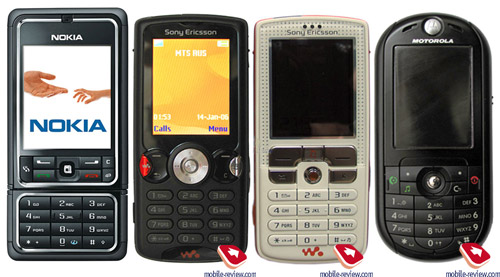
So happens, that Walkman line-up by Sony Ericsson doesn’t provide
any handsets with youth design, that’s why they can’t claim only
youth audience. The first phone in this range, W800i possess white-orange
trim, which made some to refuse purchasing the handset, and on the
other hand appealed to a certain share of consumers. Why talking
about that? Because only this model may be hardly considered as
a solution for youth, at the same time both Nokia 3250 and Motorola
ROKR E2 have been presented as handsets targeted at younger audience
in the first place. All other participants of this survey relate
to a class of phones aimed to appeal a wider audience.
| Model |
Weight, grams |
Measurements, mm |
| Motorola ROKR E2 |
117 |
102õ46.5õ18 |
| Nokia 3250 |
115 |
103.8õ50õ19.8 |
| Samsung X700 |
95 |
108x43.7x19.4 |
| Siemens S75 |
99 |
103x47x18.5 |
| Sony Ericsson W800i |
104 |
100õ46õ20.5 |
| Sony Ericsson W810i |
99 |
100õ46õ19.5 |
| Sony Ericsson W900i |
148 |
109õ49õ24 |
| Sony Ericsson W300i |
94 |
90õ47õ24.5 |
As you see, all models may be divided into two camps – those with
weight over 100 grams and less than this value. Sony Ericsson W900i
stands out against this background, as it features maximum weight,
and consequently, measurements. Even though the W800i could have
been moved to the first group, we decided not to do it for the sake
of justice. From this it follows that we have the following groups
of devices:
- Samsung X700, Siemens S75, Sony Ericsson W810i, Sony Ericsson
W300i
2. Sony Ericsson W800i, Motorola ROKR E2, Nokia 3250
3. Sony Ericsson W900i
1.2 Memory cards extension slot, type, maximum capacity, price
per 1 Mb

The manufacturers are making efforts to keep the applied memory
cards type the same throughout the entire product line, though there
are several outstanding models as well. For example in most of its
products Motorola uses MicroSD cards, while ROKR E2 is equipped
with a standard SD extension slot. Sony Ericsson has recently stepped
in the period of global technologies upgrade, that’s the reason
why we see it switching from MS Duo Pro to more compact M2. The
former type is not so widespread on the market, but the company
ensures that by the time the first handset, supporting this standard,
arrives in the markets, these memory cards will have already hit
the shelves of retail stores. At that they stress that the price
for M2 will be equal to MS Duo Pro cards with the capacity.

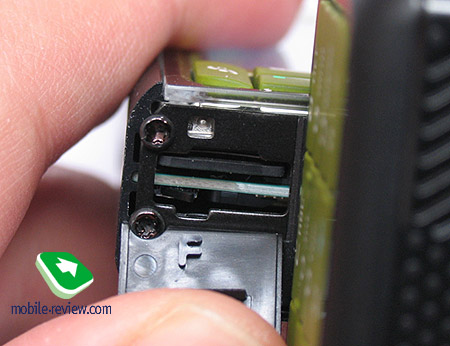
In the column featuring maximum capacity we stated not overall
technical possibilities for various standards, but the capacity
which will be available in 2006. As of M2 memory cards, their shipment
start is scheduled for end of summer – beginning of fall.
| Model |
Memory card |
Hotswap |
Maximum size, Gb |
Memory card found in the kit, Mb |
| Motorola ROKR E2 |
SD
|
+ |
2 Gb |
128 |
| Nokia 3250 |
MicroSD /TransFlash |
+ |
1 Gb |
512 |
| Samsung X700 |
MicroSD /TransFlash |
+ |
1 Gb |
- |
| Siemens S75 |
RS-MMC |
+ |
1 Gb |
128 |
| Sony Ericsson W800i |
MS Duo Pro |
+ |
4 Gb |
512 |
| Sony Ericsson W810i |
MS Duo Pro |
+ |
4 Gb |
512 |
| Sony Ericsson W900i |
MS Duo Pro |
+ |
4 Gb |
64 (470 Mb of internal memory) |
| Sony Ericsson W300i |
MS M2 |
+/- (need to take off the cover) |
1 GB |
256 |
Price for various memory cards is different and directly depends
on the given region – in Asia, for example, they cost much less
than in Europe. We calculate prices starting from the available
products in retail stores at present or forecasts. Cards with the
biggest capacity serve as a basis for the calculation, so you should
keep in mind that for less capable memory cards price per 1 Mb will
be higher.
| Memory card type |
Price per Mb in USD |
| MicroSD/TransFlash |
0.1 |
| SD |
0.04 |
| RS-MMC |
0.12 |
| MS Duo Pro |
0.08 |
| MS M2 |
0.11 |
In terms of price/quality ratio the obvious leader is SD format
– the maximum size of 2 Gb can be purchased by the majority of consumers.
Both Memory Stick Duo Pro and microSD reside in pretty much the
same price bracket; even though until recently the price for Sony
cards was considerably higher. As you can see, RS-MMC and MS M2
are not going to hit the top of consumers’ interests; by the way,
the former format hasn’t been introduced into the market yet. The
difference is huge only when opposing SD against all other formats,
as for the other specifications, all those cards are rather equal.
- Motorola ROKR E2
- Samsung X700, Siemens S75, Sony Ericsson W810i, Sony Ericsson
W300i, Sony Ericsson W800i, , Nokia 3250, Sony Ericsson W900i
1.3 Synchronization with PC, music upload, additional software
For a music phone, well-realized synchronization with PC may come
in handy and earn a handset several points in consumers’ opinion.
All the reviewed handsets provide possibility of sending data directly
to memory card by putting it in a desktop (if you have a corresponding
slot of course), apart from this one can use USB-cable in order
to upload some music.
Following a good tradition, Nokia packs Nokia PC Suite in the standard
kit – this software kit includes an application for transferring
music to a handset with the possibility of conversion of MP3 files
into ACC format. Cable’s type – original DKE-2, which is included
in the package of Nokia 3250.
Motorola as always offers Mobile Phone Tools – on the whole capabilities
of this application are common with no distinguishable differences.
Sony Ericsson provides PC Suite along with its phones – using the
program you can explore handset’s memory, memory card’s folders
once USB-cable is plugged in. Another utility is Disc2Phone, allowing
copying music CDs to a handset, which are converted on air – the
application sets up ID3 tags by connecting to CDDB database without
any efforts from your side. At present no alternatives of Disc2Phone
are available from other manufacturers.
As to Siemens, it arms its users with Mobile Phone Tools tool kit,
though it has more disadvantages rather then positive sides: first
of all, it’s unstable, hard to install on systems with non-standard
hardware configuration. So in case you actually made it work, you
will discover functions for transferring files and all other core
possibilities. This application reminds of Nokia’s one in many respects.
Samsung prefers applying Easy Studio, a software kit, guaranteeing
medium-scaled possibilities and nothing more, as it doesn’t offer
any specialized music functions.
Among all these handsets only Samsung X700 is shipped without a
USB cable, while the other have it packed into the box. For Motorola
ROKR E2 USB-cable is a default miniUSB (B) one.
| Model |
USB cable in the kit |
USB Mass Storage |
Software for syncing/music |
| Motorola ROKR E2 |
+ |
+ |
+/- |
| Nokia 3250 |
+ |
+ |
+/+ (autumn Windows Media Player 11) |
| Samsung X700 |
- |
- |
+/- |
| Siemens S75 |
+ |
- |
+/- |
| Sony Ericsson W800i |
+ |
+ |
+/+ |
| Sony Ericsson W810i |
+ |
+ |
+/+ |
| Sony Ericsson W900i |
+ |
+ |
+/+ |
| Sony Ericsson W300i |
+ |
+ |
+/+ |
One can say without any doubts, that the handsets by Sony Ericsson
are adapted for operating with music files more than the other ones
– potentially comparable capabilities are embedded in Nokia 3250,
which will only evolve wit the release of Windows Media Player 11.
In April’s shipments no extra capabilities regarding synchronization
will be provided.
Capacities of Siemens S75, Samsung X700 look quite unattractive
against such background, as they are not supposed to work primarily
with music and what is more, Samsung doesn’t have a cable in the
standard kit.
- 1. Nokia 3250 and all Sony Ericsson’s products
- Siemens S75, ROKR E2
- Samsung X700
1.4 General media player’s concept and special effects
In all of the reviewed cases, media players support creation of
playlists and displaying tracks’ info, taken from files’ tags. While
working in background mode, all handsets, saving for Samsung’s models
and Siemens S75, show information on the current playing song and
its position in playlist. Also on incoming call, playback is paused
and continued from the moment it was paused at when conversation
is ended. As for major drawbacks of Siemens’s device is impossibility
of adding to a playlist tracks, located in different folders, also
the handset’s media player lacks random playback, sorting by artist,
album, etc. – in other words all functions, the other reviewed phones,
with the exception of Samsung, are equipped with.
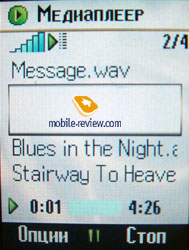


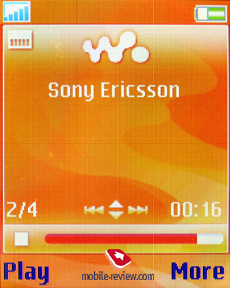

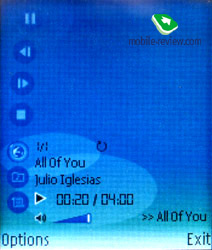

Where all the significant differences lie in, is section of special
effects, namely equalizers, since not all models can provide stability
of their operation. The technology of Spatial Audio is worth of
a special note, as it allows getting unexpectedly good and clean
sound in ROKR E2, when using earphones; as a matter of fact it is
one of those rare cases, when MP3-players are inferior to a handset
in some ways. In terms of media player, majority of Sony Ericsson’s
devices are twins – function Bass in practice stands for one of
the equalizers. Essential parameters for all phones are option for
switching media player to background mode and also life time with
the network part turned off.
| Model |
Equalizers (built-in, adjustable) |
Special effects |
Background mode/Aircraft mode
|
| Motorola ROKR E2 |
+/- |
Spatial Audio/ Bass Boost |
+/+ |
| Nokia 3250 |
+/+ |
Stereo Widening/Bass |
+/+ |
| Samsung X700 |
+/- |
- |
-/- |
| Siemens S75 |
- |
- |
+/- |
| Sony Ericsson W800i |
+ |
Bass |
+/+ |
| Sony Ericsson W810i |
+ |
Bass |
+/+ |
| Sony Ericsson W900i |
+ |
Bass |
+/+ |
| Sony Ericsson W300i |
+ |
Bass |
+/+ |
FG. Quality of special effects is pretty easy
to reveal when handsets are in hands of our focus-group – let’s
see the results of the tests.
| Model |
Equalizers (+/-) |
Rating
|
Subjective rating (like or dislike)
|
| Motorola ROKR E2 |
+ (Spatial Audio) |
8.3 |
Like |
| Nokia 3250 |
+ |
4.2 |
Dislike |
| Samsung X700 |
+ |
- |
- |
| Siemens S75 |
- |
- |
- |
| Sony Ericsson W800i |
+ |
7.4 |
Like |
| Sony Ericsson W810i |
+ |
7.6 |
Like |
| Sony Ericsson W900i |
+ |
8 |
Like |
| Sony Ericsson W300i |
+ |
7.7 |
Like |
The evident leader here is Motorola’s device, which is followed
by a tight group of Sony Ericsson’s phones. The 3250 ended up as
an outsider in this trial, while Siemens’s products were not rated
at all since they lack the corresponding functions.
- Motorola ROKR E2
- All Sony Ericsson’s products
- Nokia 3250
- Samsung X700
FG. The next characteristic to be evaluated is
Bass – in fact this setting is know to many users and therefore
exactly while testing this function we encountered intriguing results
– despite all the rest models, ROKR E2 supports fine adjustment,
using 7 scales, while the other phones doesn’t have this one (one
might consider changing equalizers’ setting, though it is not always
handy).
| Model |
Bass (+/-) |
Rating
|
Subjective rating (like or dislike)
|
| Motorola ROKR E2 |
+ (7 scales) |
9.3 |
Like |
| Nokia 3250 |
+ |
6.6 |
Like |
| Samsung X700 |
- |
- |
- |
| Siemens S75 |
- |
- |
- |
| Sony Ericsson W800i |
+ |
7.3 |
Like |
| Sony Ericsson W810i |
+ |
7.9 |
Like |
| Sony Ericsson W900i |
+ |
9.3 |
Like |
| Sony Ericsson W300i |
+ |
8.2 |
Like |
The survey results are almost identical to the previous tables
– and there is no wonder in this, except for the absence of Samsung.
- Motorola ROKR E2
- All Sony Ericsson’s products
- Nokia 3250
1.5 3.5 mm jack, headset quality

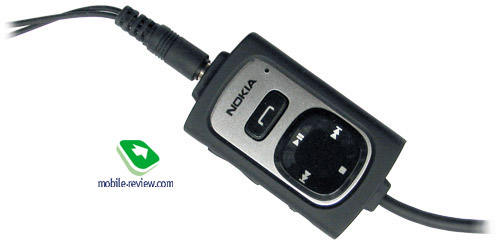

It’s not a secret that a headset, shipped with a phone plays not
the last part in concluding an impression of a device. This parameters
seems much less significant in fact handset holds a 3.5 mm jack,
though let us say a few more words about it. All headsets’ standard
kits are replenished with earphones of closed type – it has become
something like a tradition, or how can on explain that they just
won’t pack a different type of headset into the boxes. But let’s
get back to describing the earphones themselves – all devices by
Sony Ericsson are shipped along with HPM-70 (saving for W900i, which
features a headset with incorporated FM-radio and remote control).
Judging by overall specifications, the earphones provided by Sony
Ericsson claim the first place, as they have rubber framings are
do better at sound isolation. The package of Nokia 3250 has the
same earphones, if you miss the fact they look not as good.
| Model |
Framings (rubber / plastic) |
3.5 jack
|
| Motorola ROKR E2 |
Plastic |
On the casing |
| Nokia 3250 |
Rubber |
On handsfree set cable |
| Samsung X700 |
Plastic |
- |
| Siemens S75 |
Plastic |
- |
| Sony Ericsson W800i |
Rubber |
On handsfree set cable |
| Sony Ericsson W810i |
Rubber |
On handsfree set cable |
| Sony Ericsson W900i |
Rubber |
On handsfree set cable |
| Sony Ericsson W300i |
Rubber |
On handsfree set cable |
In this very category we can’t outline an all-round leader – all
handsets provide almost the same functionality, nonetheless obvious
outsiders are known beforehand – devices by Samsung, Siemens. ROKR
E2 gets into the first group owing to presence of a 3.5 mm jack
on the phone’s body, what is quite uncommon in this market segment.
- All devices by Sony Ericsson, Motorola E2, Nokia 3250
- Siemens S75, Samsung X700
FG. One of the main parts of our research was
finding out how the sound is percept by consumers. Within 10 minutes
each member of focus group was listening to various songs (4 different
music styles, each had the same set). In the end people were asked
to put a mark on 10 grade scale.
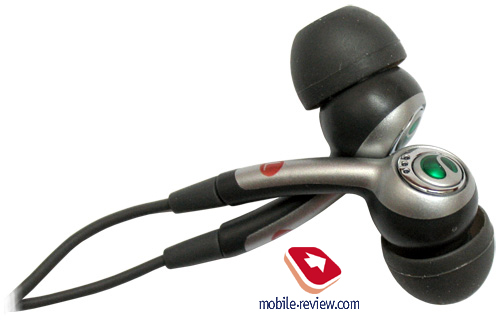
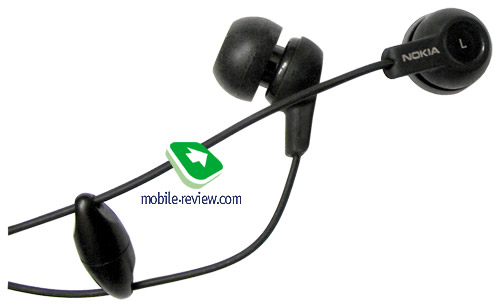
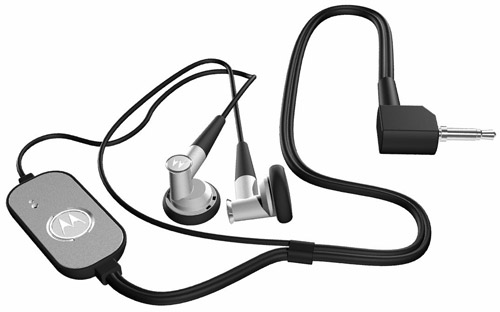
We decided to complicate the task, and not just rate the phone
with standard headphones, but also offer one and the same headphones
for all models, in order to grade possible difference in sounding
of standard headphones. We used Sony MDR-Q66LW as custom headphones,
they are laid on ones, average price. In order to avoid subjective
factor, we pasted the manufacturer’s name. For our third test (basically
it was the first one if speaking of actual order) we offered listening
songs when the person cannot see the phone, he just had white box
in front of him. The volume level was at 60% of maximal available,
but user had the ability to change it the way he preferred more.
(in the first test assistant was doing it instead).
The first results were already interesting, since ROKR E2 became
almost indisputable leader in terms of sound quality in all three
tests. At the same time Nokia’s product received minimal mark for
sound quality, when users did not see it. During the moment when
they were listeingn to it and were able to see the phone itself,
the marks were significantly higher. The reason for that is because
Nokia’s brand is very popular and users are loyal to that. Their
expectations of music phone are high and when they hear the actual
quality, they believe that it’s just their faulty hearing, not faulty
phone. Mismatch of sound and expectations leads to conclusion that
user has something with his ears; he tries to hide that and give
higher mark to the product. This is a clearly demonstrative experiment,
which clearly demonstrates how percept of brand name grades flaws
in realization of this or that function.
For Sony Ericsson products brand perception and expectations of
quality are approximately even, this is proven by marks and minimal
difference in all three tests.
| Model |
Sound quality with third-party earphones (phone
is hidden) |
Sound quality with third-party earphones (phone
is in sight)
|
Sound quality with original earphones
|
| Motorola ROKR E2 |
9.2 |
8.1 |
8.1 |
| Nokia 3250 |
6.4 |
8.8 |
8.2 |
| Samsung X700 |
- |
- |
7.1 |
| Siemens S75 |
- |
- |
7.4 |
| Sony Ericsson W800i |
8 |
8.2 |
8 |
| Sony Ericsson W810i |
8.2 |
8.1 |
8.2 |
| Sony Ericsson W900i |
8.4 |
7.8 |
7.9 |
| Sony Ericsson W300i |
8.1 |
7.4 |
7.6 |
The phones can be divided into following groups:
- Motorola ROKR E2
- Sony Ericsson handsets
- Nokia 3250
- Siemens S75, Samsung X700
In order to make this experiment even more complete we compared
the sound quality of handsets to the most popular mp3 player on
today’s market – iPOD Nano. This test has also been conducted in
“blind” mode, the users could not see neither the phone, nor the
player. Headphones were the same for all cases. We also asked users
to guess the brand of the phone, which was used in every case. Once
again Nokia’s presence was noticed in the higher results section,
as for Sony Ericsson, guessing process was more peaceful.
It should be noted that everyone pointed out good sound quality
of ordinary flash player, which allows us concluding the idea that
current models of middle class have not reached the sound quality
and features of top mp3 players just yet. We decided not to go into
in-depth comparing of sound effects and this kind of things, this
theme is too vast, and the result sis quite predictable. Motorola
ROKR E2 was the only phone that could match flash player’s sound
quality.
| Model |
Sound quality with third-party earphones |
iPOD Nano
|
Which handset brand was used?
|
| Motorola ROKR E2 |
8.1 |
9.2 |
Nokia |
| Nokia 3250 |
5.3 |
8.9 |
Motorola |
| Samsung X700 |
- |
- |
- |
| Siemens S75 |
- |
- |
- |
| Sony Ericsson W800i |
6.9 |
8.8 |
Nokia |
| Sony Ericsson W810i |
7.1 |
9.3 |
Sony Ericsson |
| Sony Ericsson W900i |
7.4 |
9 |
Nokia |
| Sony Ericsson W300i |
7.5 |
9.4 |
Sony Ericsson |
The results in groups look the following way:
- Motorola ROKR E2
- Sony Ericsson handdsets
- Nokia 3250
1.6 External control keys, remote controls

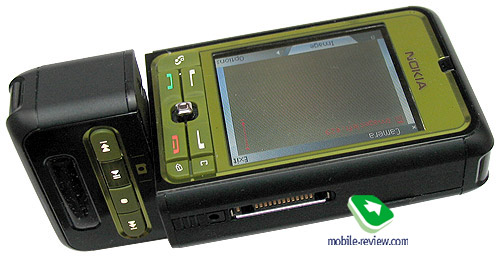
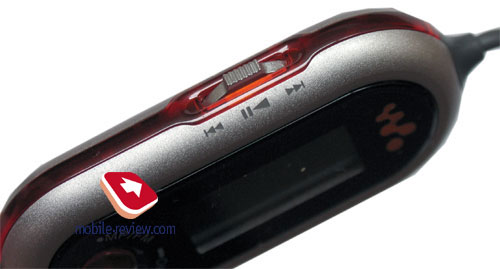
In order to manipulate music player there have to be at least external
keys, or perhaps a remote control. Among the models that we were
reviewing, only Nokia 3250 and Sony Ericsson W900i.had remote controls.
This feature strongly singles out these models from overall mass.
All Sony Ericsson phones can be used in dual mode, their keys to
be precise (soft keys), at the same time ROKR E2 and Nokia 3250
have special keys for music player. So if we divide the models into
groups and conduct rating, it would look the following way (remote
control has parity over external keys on the case):
- Nokia 3250, Sony Ericsson W900i
- ROKR E2
- Remaining Sony Ericsson handsets
1.7 Bluetooth stereo-headsets, presence of A2DP profile
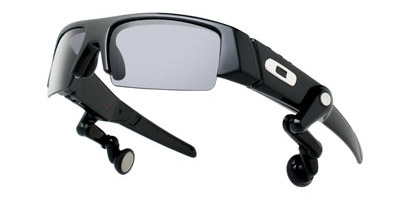
Saying that feature of wireless sound transfer to other devices
is in demand by mass consumers is quite wrong, for now this is a
toy for technology geeks. But mostly it’s exactly them who buy “music”
phones, that’s why we decided to stop on that feature for a little
longer. In order to have this feature, the phone must support A2DP
Bluetooth profile. The following handsets have it on board: ROKR
E2, Siemens S75, Samsung X700. Others
however seem to be missing it, Nokia 3250 surprises us the most
in this way.
1.8 FM-radio availability, its quality
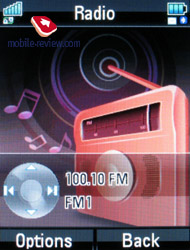

Presence of FM tuner in a headset is a must have addition to media
player for many users. That’s why we decided to review this parameter
as well. The realization of radio is equal in terms of quality in
most cases; however ROKR E2 has a better designed FM tuner, and
here’s why: the station memory is bigger, the step between frequencies
is smaller, this provides finer tuning. In Sony Ericsson W900i radio
block is external, it is located on the remote control, this is
why the quality is affected, it is lower than in other products
from this company. The result for all models will look the following
way:
- ROKR E2
- Nokia 3250, all Sony Ericsson phones except for Sony Ericsson
W900i
- Sony Ericsson W900i, Samsung
1.9 Handset’s life time with network part tuned off under conditions
of constant music playback
A phone with feature of music playback is related to hybrid type
of devices, as a result you have to make phone calls, write and
read messages, listen to music itself. In each of the modes energy
consumption is different and comparing battery’s capacities will
not be the proper way to find out which phone is the best. We tested
the stand by time in a very simple way: the phone had to playback
7 different songs in looped cycle, until the battery could last.
We were not using profiles with disabled network block, the default
headphones that ship in the package together with the phone were
used (this is logical for most consumers). The volume was set to
maximum, in case you adjust lower volume, the results can be slightly
better.
| Model |
Life time, hours |
| Motorola ROKR E2 |
19 |
| Nokia 3250 |
10.5 |
| Samsung X700 |
8 |
| Siemens S75 |
9 |
| Sony Ericsson W800i |
13 |
| Sony Ericsson W810i |
14 |
| Sony Ericsson W900i |
12.5 |
| Sony Ericsson W300i |
26 |
The record breaker is Sony Ericsson’s latest product W300i, it
is one of the latest generation Walkman phones and is showing some
impressive performance. At the same time ROKR E2 is performing surprisingly
well as well. Other Sony Ericsson phones have minor differences
in stand by time, as for Nokia – well, it’s slightly lagging behind.
Siemens and Samsung handsets are showing quite poor results. The
final list looks the following way:
- Sony Ericsson W300i
- ROKR E2
- Remaining Sony Ericsson handsets
- Nokia 3250
- Samsung X700, Siemens S75
Conclusion and results of comparison
Let’s move on to the most interesting part of our review – the
results. But before we start, I’d like to highlight several conclusions
that can be made already. First of all, Samsung handsets (all ordinary
phones, except for i300, this is a different story) are not “music”
ones, this is not the place where we are discovering America. Lack
of many typical features for these kind of of phones prevents us
from even announcing the deciding mark, same goes for Siemens, however
the manufacturer announced quite a big number of “music” phones
that are scheduled to hit the shelves this year, but so far there
aren’t even prototypes. Considering the amount of bugs in software
firmware for today and lack of default features, like shuffle playback
mode, it’s hard to except much from the upcoming models so far.
I am speaking only about the aspect of “music” phones.
Secondly, the dominating brand on today's market is Sony Ericsson's
Walkman. The company has maximal amount of models, we did not even
include W550i in our review, otherwise the material would have gone
way out of hand big. It’s up to Walkman phones to set trends for
“music” phones. This was proven by our “focus groups”, the expectations
always meet the specifications. At the same time, expectations from
Nokia’s product were a lot higher than its actual specifications.
Let’s count the overall points for phones and see what we get in
the end:
| Model |
Total |
| Motorola ROKR E2 |
51 |
| Nokia 3250 |
41 |
| Sony Ericsson W800i |
45 |
| Sony Ericsson W810i |
49 |
| Sony Ericsson W900i |
44 |
| Sony Ericsson W300i |
48 |
Abstracting of price for every handset, its availability on the
market, we can say that the winner of this review in terms of quality
is Motorola ROKR E2, followed closely by dense group of Walkman
branded phones from Sony Ericsson, and only then we see Nokia and
its 3250. But perhaps the price of the product will change everything?
Since it’s up to price/quality ratio to give the final verdict in
favor of one or other product, sometimes not so interesting product
can be better than others due to its price. Let’s add the price
of these phones to our current matrix. This parameter was counted
in the following way: ratio of overall points to price multiplied
by 100. The more the number is – the more attractive the phone will
be.
| Model |
Total |
Price
|
Ratio
|
| Motorola ROKR E2 |
51 |
350 USD (available in September) |
14.57 |
| Nokia 3250 |
41 |
550 USD (available) |
7.45 |
| Sony Ericsson W800i |
45 |
375 USD (available) |
12 |
| Sony Ericsson W810i |
49 |
450 USD (available) |
10.88 |
| Sony Ericsson W900i |
44 |
550 USD (available) |
8 |
| Sony Ericsson W300i |
48 |
275 USD (available in June) |
17.45 |
The fact that ROKR E2 is the leader is not so suprirising, the
phone turned out very successful in all directions (other functions
are great as well). But manufacturer is not in a rush to release
this model as quickly as possible, it will hit the shelves only
in Autumn. At that moment the positions can change, but I still
think that the model will remain impressive, it’s jus the competition
between already available music phones that will grow, and it is
very interesting to say the least (remember that the design will
not suit everyone, it’s a mobile phone for young people). Sony Ericsson’s
products W800i and W810i are rather interesting as well.As for W900i,
this model does not look so appealing when compared to the competitiros,
it has low price/quality ratio. The situation is same for Nokia
3250, there is almost 2x gap between the leader and this model.
We can always say “hey, it’s a smartphone, it means…” and what just
this means exactly? We were comparing only “musical” part of the
handset, and this part has been inferior when compared to others.
This is why it takes last place in our rankings, this position is
well-deserved.
We did not include phones that are coming from higher price segment,
but we are already working on another material that will concentrate
on those models. It’s just because smartphones have so many issues.
Once again I’d like to point out that you can select only those
functions, that you actually need, after that try calculating the
score again, we clearly described the method. Perhaps some model
will become more attractive than others just for you.
For those who are interested in other functions as well, I can
advice looking into corresponding reviews, we had a lot of photos
of displays, references to realizations of one or other functions.
To cut the long story short, you have the stuff what you can read,
go on!
Links to the corresponding materials:
Here
is the opinion of our readers on what a perfect music should be
>>>
Eldar Murtazin (eldar@mobile-review.com)
Translated by Oleg Kononosov (oleg.kononosov@mobile-review.com)
Published — 07 April 2006
Have something to add?! Write us... eldar@mobile-review.com
|
News:
[ 31-07 16:21 ]Sir Jony Ive: Apple Isn't In It For The Money
[ 31-07 13:34 ]Video: Nokia Designer Interviews
[ 31-07 13:10 ]RIM To Layoff 3,000 More Employees
[ 30-07 20:59 ]Video: iPhone 5 Housing Shown Off
[ 30-07 19:12 ]Android Fortunes Decline In U.S.
[ 25-07 16:18 ]Why Apple Is Suing Samsung?
[ 25-07 15:53 ]A Few Choice Quotes About Apple ... By Samsung
[ 23-07 20:25 ]Russian iOS Hacker Calls It A Day
[ 23-07 17:40 ]Video: It's Still Not Out, But Galaxy Note 10.1 Gets An Ad
[ 19-07 19:10 ]Another Loss For Nokia: $1 Billion Down In Q2
[ 19-07 17:22 ]British Judge Orders Apple To Run Ads Saying Samsung Did Not Copy Them
[ 19-07 16:57 ]iPhone 5 To Feature Nano-SIM Cards
[ 18-07 14:20 ]What The iPad Could Have Looked Like ...
[ 18-07 13:25 ]App Store Hack Is Still Going Strong Despite Apple's Best Efforts
[ 13-07 12:34 ]Infographic: The (Hypothetical) Sale Of RIM
[ 13-07 11:10 ]Video: iPhone Hacker Makes In-App Purchases Free
[ 12-07 19:50 ]iPhone 5 Images Leak Again
[ 12-07 17:51 ]Android Takes 50%+ Of U.S. And Europe
[ 11-07 16:02 ]Apple Involved In 60% Of Patent Suits
[ 11-07 13:14 ]Video: Kindle Fire Gets A Jelly Bean
Subscribe
|



























